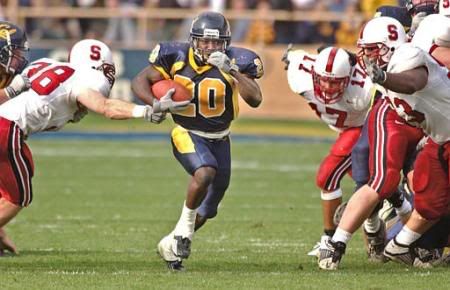Out of Conference Games, Part I
With the move to a 12-game schedule, the Pac-10 has gone to a true round-robin format; the only other major conference to do this is the eight-team Big East.
This means that, unlike other conferences which will play eight conference games (as they did under an 11-game format) and four out of conference games, Pac-10 teams will only play three out-of-conference games. This places a premium on the three teams chosen to be the out-of-conference opponents.
Some notes here on scheduling out-of-conference opponents. Subsequent posts will consider Cal's particular opponents, and the quality of games between conferences as a whole.
Last year, Texas won the BCS Championship while playing LA-Lafayette and Rice in their out-of-conference schedule, who had a combined schedule of 7-15 (to be fair, LA-Lafayette won the Sun belt conference, although their record was 6-5). Of course, Texas' third out-of-conference game was against then-#3 and eventual #4 Ohio State.
The other team in the Rose Bowl last month was USC, who played an out-of-conference schedule that included Arkansas (4-7) and Hawaii (5-7), but also Fresno St. (8-4 before the bowls, undefeated when they met USC) and Notre Dame (9-2 before bowls, ranked #9 after the season).*
This indicates that playing a relatively soft (where relatively soft includes two games which are virtually assured wins, while the other games provide a much stronger test) out-of-conference schedule is accepted as an aggressive enough approach. Texas only played one non-conference game against major conference team (Ohio St.), and USC only played two of their four out-of-conference games against "BCS-caliber competition" (Notre Dame, Arkansas). Both Notre Dame and Ohio St. eventually played in a BCS game, as well, and it almost purely by virtue of those two wins that Texas and USC were considered, by the middle of October, to be far-and-away, the two best teams in 2005.
Many people prefer to consider an A-B-C scheduling motif, where an A-team is BCS caliber (Notre Dame, Ohio St.), a B-team is a major conference team that is not at the top of its conference (Arkansas) or a minor conference team that is excellent (Fresno St.), and a C-team is a minor-conference mid-range team or a 1-AA team (Rice, LA-Lafayette, Hawaii). However, given the vagaries of their seasons, Texas played what might be considered an A-C-C schedule, while USC played what might be called an A-B-C-C schedule. Neither team was penalized for not playing an out-of-conference schedule that matched the perceived difficulty of their conference schedule (an A-A-B schedule, for instance).
There is a saying that in competition, you become the best by beating the best. This is perhaps not the case in college sports: in college, you become the best by winning; the standardized quality of the opposition seems not to matter after a certain point.
* Teams which travel to Hawaii during the regular season may play a 12th game. Amusingly, USC's trip to Fayetteville in 2004 was longer than their flight to Hawaii, and spanned the same number of time zones.


0 Comments:
Post a Comment
<< Home